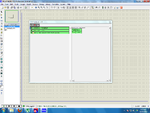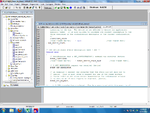xpress_embedo
Advanced Member level 4
Hello!! I want to simulate USB Programs in Proteus but i failed, i want to know whether i am doing something wrong, Please suggest me something.
I am using MPLABC18 Compiler
This is My Mouse Simulation it is working fine.

While this simple HID Custom Demo is not working,

Please suggest me why this is happening.
I am having PIC18F4550 Board with me same thing occurs with it when i run the code in proteus it doesn't work but is working in real hardware.
and this is also happening in PIC18F46J50
Please suggest me
why Mouse HID Program is working and why other is not working
This is the same case with the Mass Storage Device Program Pls help me
I am using MPLABC18 Compiler
This is My Mouse Simulation it is working fine.

While this simple HID Custom Demo is not working,

Please suggest me why this is happening.
I am having PIC18F4550 Board with me same thing occurs with it when i run the code in proteus it doesn't work but is working in real hardware.
and this is also happening in PIC18F46J50
Please suggest me
why Mouse HID Program is working and why other is not working
This is the same case with the Mass Storage Device Program Pls help me
